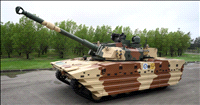TriLite Technologies to showcase 3D displays without glasses
19 Jan 2015
TriLite Technologies has announced that it would be showcasing two of its technologies-TriLite Trixel and the TriLite RGB laser module - at San Francisco's Photonics West 2015 Exhibition in early February, PC World reported.
Currently public screenings that had emerged as an important part of major sports events are available in 2D but researchers from Austria promise 3D screenings without special glasses, thanks to their invention.
A sophisticated laser system sent laser beams in different directions, making different pictures visible from different angles. The angular resolution was exceedingly fine, which made the left eye receive a different picture than the right one, creating a 3D effect.
The technology behind the system, TriLite Trixel would replace the typical RGB pixel patterns of today's giant displays with red, green, and blue laser diodes.
"We are taking the next step in the evolution of large-scale outdoor digital signage screens by enabling viewers to see the screen's images in 3D, all this without having to wear 3D glasses," said TriLite CEO Ferdinand St. Julien in a statement.
The young company started work on the idea in 2013. The company tied-up with the Vienna University of Technology to carry out the interdisciplinary project.
Together, TriLite and TU Vienna had created the first prototype, which currently had a modest resolution of five pixels by three, but it clearly showed that the system worked, sciencecodex.com reported.
to Jörg Reitterer (TriLite Technologies and PhD-student in the team of Professor Ulrich Schmid at the Vienna University of Technology), the company was creating a prototype, which would display colour pictures with a higher resolution.
However the crucial point was that the individual laser pixels worked. He added scaling it up to a display with many pixels was not a problem.
Each 3D-Pixel (also called "Trixel") consisted of lasers and a moveable mirror.
According to Ulrich Schmid, the mirror directed the laser beams across the field of vision, from left to right. He added, during that movement the laser intensity was modulated so that different laser flashes were sent into different directions.
To experience the 3D effect, the viewer has to position himself in a certain distance range from the screen. If the distance was too large, both eyes received the same image and only a normal 2D picture could be seen.
The range in which the 3D effect could be experienced could be tuned according to the local requirements.























